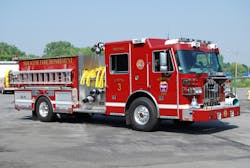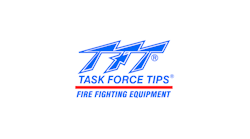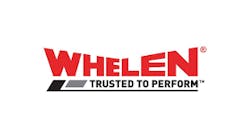The American Fire Service has often been described as “100 Years of Tradition Unimpeded by Progress.” Unfortunately, in many fire departments this statement is entirely true. Whether talking about administrative regulations, fireground operations or communications procedures, much of what we do today is a direct result of our past experiences. A common theme when conducting a post-incident critique is “Lessons learned and lessons reinforced.” Every response and fire department action provides an opportunity to hone our skills and improve our service. We can choose to act like nothing has changed or adapt our operations to provide safe and effective service delivery to the residents of our community.
Webster’s Dictionary defines progressive as: “Making use of interesting new ideas, findings or opportunities, moving forward or onward.” For a number of years I have traveled around to visit with fire departments that embrace the notion of progressive thinking with respect to their fire apparatus design. Perhaps no organization better defines this approach than the fire department in the City of Syracuse, NY. During the 1970s, the department faced the challenges of an aging apparatus fleet, older stations that were designed for horse-drawn units and a state mandate to reduce the firefighters work schedule to 40 hours per week.
A Department of Innovation
The late Chief Thomas Hanlon III lobbied for and received funding to construct seven new fire stations and over a five-year period took delivery of over 37 new pieces of apparatus. In addition to the new vehicles the department, in conjunction with newly formed companies such as Fire Research Corporation and Task Force Tips, developed new tools and nozzles that would make fireground operations safer and more efficient. During Chief Hanlon’s tenure, between 1970 and 1985, the department was propelled into being one of the most progressive fire service organizations anywhere.
The most visible of these actions was the development of the Mini-Maxi Concept where each of the engine companies were assigned a short wheelbase commercial four-wheel drive chassis apparatus equipped with a 300-gpm pump, 200-gallon water tank, 750 feet of large diameter supply line, two crosslays and a preconnected remote-control monitor. A custom chassis four-wheel drive unit equipped with a 50-foot telescopic waterway, 2,000-gpm pump, 500-gallon water tank and four preconnected handlines supplemented these mini-pumper units. Each of the pumpers was outfitted with automated pump controls, automatic nozzles and Rapid Water injection systems. During this period department operations were constantly revised and upgraded to match their new capabilities.
Today the department protects the city with 10 engines, six trucks, a rescue company and several aircraft rescue firefighting units deployed at the Syracuse Hancock Airport. The department is under the command of Chief Mark McLees and annually responds to more than 20,000 incidents. The Mini-Maxi Concept has evolved over the years to keep pace with the increased number of EMS responses. A first-alarm incident calls for the response of three engines, two trucks and the rescue company. Together with a district chief a routine incident brings 27 personnel and a chief with specific assignments for each unit.
Each Syracuse engine company is assigned a first response EMS vehicle and a 2,000-gpm maxi pumper for fire suppression duties. The departments engine fleet is comprised predominately of both Saulsbury and American LaFrance apparatus that are similarly equipped with 50-foot TeleSqurt model booms, four preconnected crosslay attack lines, Class A foam systems and 500-gallon water tanks. Since 1973, the department’s engine apparatus has retained these capabilities, which are complimented by the six truck companies all of which are assigned Sutphen aerial towers that were acquired between 2001 and 2010. Due to current economic and industry conditions the department was challenged to develop specifications for two new pumpers that would not be provided with the elevated water-tower devices. After a competitive bidding process using the department’s specifications the contract for two new pumpers was awarded to the Sutphen Corporation. Working with engineers from Sutphen and their local representative, Phil Vandemolen, the department set out to finalize the design for their new apparatus.
New Apparatus For Engines 3 And 7
The department’s newest engine apparatus are assigned to Engine Companies 3 and 7, each of which serves busy first-due response areas. The pumpers are powered by a Cummins ISM engine, rated at 500 horsepower, through an Allison Generation IV model EVS-4000 five-speed automatic transmission. The apparatus is equipped with several safety enhancements including a steel reinforced front bumper, front and side cab scene lighting, electronic stability control and a chassis lubrication system.
The engines are built with a wheelbase of 200 inches and an overall length of 31 feet, 8 inches. The Sutphen cab provides seating for six with three seats equipped with hands-free self-contained breathing apparatus (SCBA) brackets. The apparatus has an overall height of 117 inches with a gross vehicle weight rating of 44,000 pounds. The engines were designed with full height and depth compartments on the left side of the body with low side compartments on the right side. The cab is equipped with hinged door compartments on each side with the left side dedicated for use as a storage area for the driver’s turnout gear. The right side cab door provides access to an interior mounted EMS compartment that allows equipment to be retrieved from both the inside and outside of the apparatus.
The front of the apparatus is equipped with a steel reinforced front bumper designed to protect the apparatus and the crew. The 19-inch extension is equipped with a 2-inch front trash line discharge that is protected by a hinged aluminum treadplate cover.
The apparatus warning light package consists of a Whelen Freedom 72-inch long roof-mounted LED light bar with a Whelen mini LED light bar located on a stainless steel bracket below the windshield. Forward facing cab warning lights include four Whelen Super LED lights with six Whelen Super LED lights on the side of the body. Rear apparatus warning lights are comprised of Whelen model L31H LED lights on the rear stanchions together with red LED lights located on the lower body panels. Scene lighting is provided by two front and two side cab-mounted Fire Research 150-watt HID 12V Focus lights together with Federal Night Fighter telescopic lighting at the rear of the cab. The fixed cab lights are individually switched inside of the cab with the telescopic lighting controlled at the pump panel.
The pumper bodies are fabricated from stainless steel with a stainless steel substructure and are provided with six enclosed lower body compartments that are protected with Amdor roll-up shutter doors. The standard ground ladder compliment of a 24-foot extension, 14-foot roof and 10-foot folding ladders are mounted on the right side of the body, together with two tubes for pike poles.
Fire Supression Features
The engine apparatus are equipped with a Hale QMax single-stage fire pump rated at 2,000 gpm and can be supplied from either one of the side 6-inch inlets or from the 3-inch gated inlets located at the right side pump panel and rear of the hose body. In addition to the trash line discharge, each of the crosslay hose beds are supplied with 2 1/2-inch plumbing with full flow valves. Two 2 1/2-inch discharges are located at the pump panel together with one at the left side rear of the apparatus to supply a Task Force Blitz Fire ground monitor. Two 4-inch discharges are located at the right side pump panel with a 3-inch discharge located above the fire pump to supply a Task Force Typhoon RC monitor. A Foam Pro Class A injection system can supply foam to the front trash line as well as any of the four crosslay attack lines. A 500-gallon L-shaped water tank provides for a low hosebed floor at the rear body, which also incorporates a 50-gallon foam cell.
The rear hosebed is equipped with two 700-foot beds of 4-inch supply line and 200 feet of 2 1/2-inch hose for the Blitz Fire monitor. The crosslay hosebeds are equipped with two 200-foot, 1 3/4-inch lines and two 300-foot lines that are made up with 200 feet of 2-inch hose and 100 feet of 1 3/4-inch hose. The pump panels were designed to make operations safe and efficient with low-mounted attack lines, color-coded discharges and large-size discharge gauges.
Over the years, the Syracuse Fire Department has designed and operated a number of unique apparatus that could well define the word “progressive.” The Syracuse Fire Department is one of a few in the United States that has been graded by the Insurance Services Office (ISO) with a Class One rating.
I would like to thank District Chief David Reeves who assisted with technical information on their new apparatus.
See Tom Shand Live at Firehouse World! Tom and Mike Wilbur will be presenting the following sessions at Firehouse World in San Diego, Feb. 26 - March 2: "Anatomy of a Rollover Accident and How to Prevent Them," "Engine Company Operations: The Top 5 Things You Need to Accomplish at All Incidents," and "Fire Apparatus Purchasing: What You Need to Know Before Signing the Contract." Stay tuned for details on the live recording of "The Apparatus Architects" at the event.
TOM SHAND is a 37-year veteran of the fire service having served with departments in Maryland, Pennsylvania and New York. He has worked in the fire apparatus industry since 1985, including 15 years with Saulsbury Fire Apparatus. He is a contributing editor to Fire Apparatus Journal and Firehouse Magazine and works with Mike Wilbur at Emergency Vehicle Response. He co-hosts the Apparatus Architects podcast with Wilbur, based on their column in Firehouse Magazine.









